Objectives Geriatrics Selective & NACSCOM Senior Citizen Visit
- To gain exposure in communicating with the elderly.
- To understand and observe their livelihood in the senior citizens home.
- To understand the needs of the senior citizens.
- To provide company and activities for the senior citizens during our visit.
- To understand the organisation and management of the senior citizens home.
- To learn more about the problems faced by the elderly physically and psychologically.
- To understand and provide solutions for the problems faced by the elderly.
Introduction to Geriatrics
Geriatrics is a branch of medicine which specializes in dealing with diseases, debilities, care and treatment of the aged society. This term is coined by Ignatz L. Nascher, a Vienna born immigrant to the United States. Geriatric medicine was a product of the British NHS which started in 1947. Unlike most medical fields, geriatrics deals with physical and mental issues, whether it is due to a pathological or purely physiological manifestations. It is undeniable that everybody ages, and with age, naturally many other problems arise. In the psychological sense, there are senior citizens that may be able to accept these changes, and there are those who might have a hard time. The reactions towards ageing varies from person to person, which can be easily observed using the Kübler-Ross model, or better known as the 5 stages of grief. These stages include:
1. Denial
2. Anger
3. Bargaining
4. Depression
5. Acceptance
With these in mind, social support is undoubtedly important to the senior citizens, whether from family or friends. However, it is unsightly to observe many senior citizens are still being ostracized, abused, and declared a nuisance. These sightings are becoming more rampant as young people’s lives are getting more fast-paced, therefore being unable to care for their parents or grandparents. Social differences also impacts the situation, whereby Asians are considered to be more compassionate towards the elderly, as compared to the Western counterpart, as it is traditionally accepted and demanded that at least a child continues to live in with their parents, which is often considered a social taboo in Western countries.
This is histogram representing the proportion of population worldwide over the age of 65. The population of senior citizens are rising throughout the years. Therefore, geriatric medicine is becoming increasingly important in regards to the healthcare of the society. As healthcare professionals, we must provide our best for these population who are often neglected so that they can age gracefully throughout their golden years.
Introduction to the NASCOM Old Folks Home (Include name)
The NASCOM Senior Citizen home is managed by the National Council of Senior Citizens Organisations Malaysia (NASCOM) which is a non-governmental organisation (NGO), meaning it is strictly a non-religious, non-racial and non-political based social care provider to the elderly. It consists of stay-in homes, daycares and affiliate clubs, which totally relies on charity. This home is managed by Mr. Tang, who is the sole caretaker.
Organisation of NASCOM
NASCOM BOARD 2008/10
Criteria for stay-in acceptance
There are certain criteria to manage the acceptance of elderly into the stay-in senior home facility, as the funding restricts the number of stay-in elderly. As explained by Mr. Tang, the elderly that have already been accepted into the facility are usually following a recommendation basis, and are needy financially. The resident will need to have someone responsible for their needs, to arrange for their welfare, medical problems, and to be contactable during emergencies.
Besides that, the resident has to be independent and mobile. They should require only minimal supervision and support, and are required to go for hospital check-ups by themselves. The Kuala Lumpur General Hospital is located nearby, and is easily accessible by taking a bus.
Demographics of the NASCOM Senior Citizen Home
This senior citizen home consists of 26 residents, of which 20 are males, and 6 are females.
Majority of the residents are Chinese.
Funding and Expenses
Funding is obtained via charitable means, either money or kind. Fundraising are also done by NACSCOM Affiliate Clubs which are located all over the country.
The basic expenses can be broken down into:
The rental of 10 units of apartment at RM124 per unit per month inclusive of utilities, of which 6 units are used to house the residents and 4 units to accommodate the Administrative Office, Kitchen, Library and Medical Healthcare unit individually. Groceries for preparation of meals are estimated at RM300 per week. RM22.50 per month is allocated for each resident as monthly allowances and for medication purposes.
The estimated total monthly expenses is RM3025.
Layout of the NACSCOM Senior Citizen Home
The NACSCOM Senior Citizen Home houses 26 residents in 6 apartment units, separated by gender. Another 4 individual apartment units are used as administrative office, kitchen, library and medical healthcare unit.There is also an open area at the ground floor of the apartment for activities.
Administrative Office
Library
Kitchen
Open area for activities
Residents’ apartment unit
Administrative office
The administrative office is used by the NACSCOM management to facilitate with administrative matters like funding, expenses, matters pertaining to the needs of the residents, intake of new residents, press visits and releases, voluntary involvement, and filing.
This office is a branch of the main NACSCOM office located in Petaling Jaya, ideally to care for this particular senior citizen home.
Kitchen – Food preparation and servings
The food is prepared by an outsourced cook, who will prepare only lunch and dinner for the residents. Due to the non-religious status of the home, there are Muslims residing there as well, therefore food prepared must be halal as well. The type of servings are usually simple rice and vegetable, as most residents prefer these simple preparations for ease of chewing and digestion. Breakfast are usually bought from eateries nearby the home, whereby they can choose to eat what they favour. However, bread and jam are available at the home if they choose to not buy their breakfast.
Medical Healthcare
Besides the monthly allowances given to the residents for medication purposes and monthly check-up at the Kuala Lumpur General Hospital, there are also weekly visits by doctors on a voluntary basis. There are also Chinese medicine physicians who monitor the health of the residents. As a majority of the residents are of Chinese race, therefore it is appropriate for a Chinese medicine practitioner to provide them medical care because these residents harbour more trust on traditional medicine than modern medicine.
In the Medicare Healthcare unit, there are beds for residents to rest when feeling under the weather or when required for physical examination by visiting doctors.
Besides that, there are also various items donated to the home like wheelchairs, beds, tables, computers, infrared equipment for body ache and many else.
Library & Recreation Area
During weekends, the library will be open for the elderly and the public to use. The families of the residents will also be able to make use of this apartment unit when they make their weekly visits. There are many books for children to read, television for visitors to watch, and also a computer room. The computer room complete with internet connection is donated by IBM.
Itinerary of the NACSCOM Senior Citizen Home Visit
The students of selective group D assembled in front of International Medical University (IMU) at 8.30am. Thereafter, we boarded two chartered buses and departed for the NACSCOM Senior Citizen home at 9.00am. The journey took only 45 minutes, and the moment we arrived, we found that tables and chairs were already set up and awaiting our arrival by Mr. Tang, the sole caretaker of the senior citizen home. A few senior citizens were also seated at the opposite end of the open area.
We have a short briefing by Mr. Tang about the NACSCOM Senior Citizen home and management. He attended to some of our questions and then we were assigned to different groups for interviewing the residents later.
Group leaders were brought on a brief tour around the home by Dr. Arun Kumar, which he further explained the purposes of the facilities available at the home. Group leaders were assigned to give the rest of the group members a tour later on.
Meanwhile, the other students separated and went on to look for the senior citizens that they were assigned to, for interviewing and spending some time with them. The group leaders joined in after the site tour.
During the interview, we were to take a complete history of the resident, to find out the trials and tribulations faced by the resident and to come up with possible solutions to the resident’s problems.
About an hour later, we invited the residents for lunch catered by us at the open area downstairs. We had an enjoyable time with various activities planned to entertain the residents, from singing to simply talking with the residents. We presented the residents with a Father’s Day card, as well as donated some things like a rice cooker and clothes that may be beneficial to the residents of the home.
Mr. Tang closed this wonderful visit with a word of thanks on behalf of NACSCOM and the residents. We waved and bade farewell to the residents and departed for International Medical University (IMU) after that.
Home Resident Interview
Personal Details
Name: Mary Chin
Age: 71 years old
Past Occupation: Live-in maid in Cheras
Hometown: Little sisters of the poor, Cheras
Marital status: Single
Children: None
Past Medical History:
Mary Chin is slightly hypertensive but does not remember the blood pressure reading, however she is not under any anti-hypertensive medication. She goes for regular monthly check-up at Kuala Lumpur General Hospital. She has never been admitted to the hospital. She is not on any medication. She has a history of backache and had trouble sleeping through the night due to the backache. She is not suffering from any other long-term illnesses like diabetes and asthma. She is otherwise healthy and mobile.
Systemic Review: (check later, what are the few things needed for history taking?)
She has not experienced any significant weight loss or weight gain. Her appetite has not changed and is healthy. She is active and does not feel fatigue or experience any energy loss. She does not have any headache, sensory disruption, chest discomfort, problems with breathing, abdominal pain, or generalised and peripheral oedema. She does not suffer from any emotional or psychological problems.
Social history:
She does not smoke or drink alcohol. Her diet is healthy and regular consisting of mainly rice and vegetable which is prepared by the home. For breakfast, she sometimes buy roti canai from a nearby hawker. She goes for a walk every morning at 7.00am and attends tai chi lessons every Wednesday morning. Her living environment is clean and free from any stress. She also walks to church every Sunday, whi
ch is nearby the home. Her daily activities includes watching television and talking with her neighbours.
Family History:
Her father passed away at the age of 75 years old due to kidney stones. Her mother passed away in 2004 at the age of 83 years old due to myocardial infarction. Her sister passed away in 2002 at the age of 60 years old due to kidney stones as well. According to the doctor, she had 3 stones in her kidney. Her brother is 65 years old and is still alive.
Other:
She likes the NACSCOM Senior Citizen home, and enjoys living there. When asked about any problems she is facing, she insisted that she is perfectly happy with her life there. Her ideal day at the home is watching television and talking with the neighbours. Her best friend in the home is another resident named Ah Chin, who helps with with keeping the home clean. She is happy with Mr. Tang and said that he is a very good and genuine man. She is independent and mobile, so she goes for walks and to church by herself.
She complains of other residents that do not clean up after themselves and waste food prepared by the home. We provided a solution for her dissatisfaction, we agreed that she can help out the home staff when preparing and giving out food. Since she personally knows the residents there better than the staff, she can advise them on the food preparation and limit food distribution to those who do not eat alot. She also agreed to advise the residents to do weekly cleaning of the premises with the acknowledgement of Mr. Tang.
Common medical problems with ageing
Cardiovascular system
With time, the heart muscle deteriorates and needs to work harder to accommodate the needs of the body. The blood vessel also lose elasticity as well as undergo atherosclerosis which will cause hypertension. Atherosclerosis occurs when cholesterol deposits in the intima media layer of the arteries, therefore narrowing the vessels. Narrowing of the vessels will cause disruption of blood flow resulting in turbulence, therefore the prevalence of damaging the blood vessels and clotting is higher. If the clot embolises, travels throughout the body and lodges in smaller arteries or capillaries, blood supply to the organ can be disrupted, causing ischaemia and infarction of the organ.
Bones, Muscles & Joints
With age, the density and size decreases, therefore causing osteoporosis resulting in susceptibility to fracture. Muscles lose some strength and flexibility. Arthritis of the joints are also common, especially in women.
Digestive system
Peristalsis in the intestines decreases with ageing, causing constipation. The secretions from the stomach, liver, pancreas and small intestine may also decrease. A decrease in insulin will cause diabetes mellitus.
Renal system
With age, the kidneys become less efficient in removing waste from the bloodstream. Diabetes and hypertension can damage the kidneys more extensively than usual. Urinary incontinence is prevalent with ageing, which is more common in women due to the loss of muscle strength of the external sphincter. With decline in oestrogen in post-menopausal woman, the lining of the urethra thins out and pelvic muscles become weaker. In men, enlargement of prostate can block the urethra, so it may cause difficulty in emptying their bladder or dribbling.
Nervous system
Brain cells decreases with age, therefore memory loss is common with ageing. However, the number of neural connections increases to maintain brain function. If this does not occur efficiently, dementia and Alzheimer’s disease may manifest. Coordination and balance becomes less efficient as well with ageing.
Eyes
With age, the eyes become drier, the retinas become thinner and the lenses gradually turn yellow and become less clear. Focusing on near objects also becomes more difficult. Other common condition that affects aging eyes also include cataracts, glaucoma and macular degeneration.
Ears
Hearing loss also affects an ageing adult, due to the thinning of the auditory canal walls, earwax build up, damage to the sensory hair cells of the inner and loss of elasticity of the tympanic membrane.
Skin
The skin becomes thinner and less elastic. It also becomes more fragile, so bruisability also increases. Age spots also becomes apparent.
Personal Reflection
I truly enjoyed this visit to the NACSCOM Senior Citizen home. We managed to experience communicating with the elderly, which was priceless. Not only that, I realised that the residents there also enjoyed our company to my delight. Prior to this, I never thought that I would benefit much from this visit, but was proven wrong when the resident that we interviewed showed so much enthusiasm when speaking with us. It really touched my heart when I saw them smile and sang along with us during the singing session at the end. We often forget about how lonely it can be living in a home and away from their family. This visit clearly enlightened us. Not only that, as future doctors, we ought to have compassion such as what we learned to obtain during this visit. These senior citizens certainly taught us more than we can ask.
What is an ideal Senior Citizen home?
In my opinion, an ideal senior citizen home is to provide the basic needs of the residents like food, hygiene facilities and medical care, as well as to provide company for them to keep them from feeling lonely.
Daily activities can be arranged like games, movie screenings, outings, cooking classes and music lessons. With these activities, their day will be filled with much excitement and less of loneliness.
Conclusion
The NASCOM Senior Citizen home helped us understand the elderly more. Besides that, we were able to observe the common problems that they face daily. The experience we obtained from this visit was truly invaluable. More field trips like this should be arranged for the benefit of the students to build compassion and understand the core of what differentiates a doctor from a good to a great one. Thank you very much to the Selective group D coordinators Dr. Arun Kumar and Dr. Susheela Devi, as well my group mates for organising this splendid event.
References
1) Overview of Geriatrics: Dr. Arun Kumar
2) Introduction Geriatrics Selectives: Dr. Arun Kumar
3) Senior Voice NACSCOM Newsletter: Edition March & September 2008
4) http://en.wikipedia.org/wiki/Geriatrics
5) http://en.wikipedia.org/wiki/K%C3%BCbler-Ross_model
6) http://www.essortment.com/all/stagesofgri_rvkg.htm
7) http://www.nacscom.org.my/
8) http://en.wikipedia.org/wiki/Ageing
9) http://www.mayoclinic.com/health/aging/ha00040

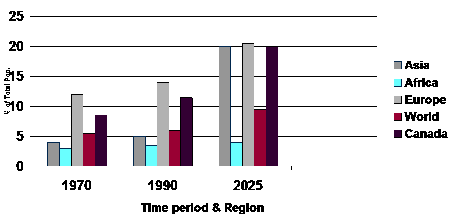
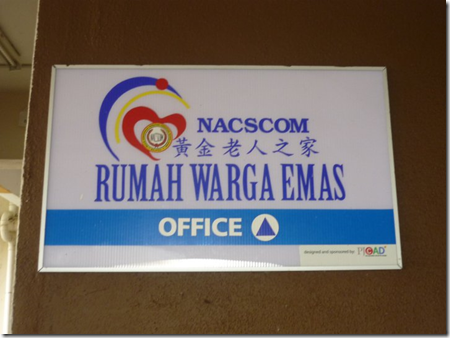


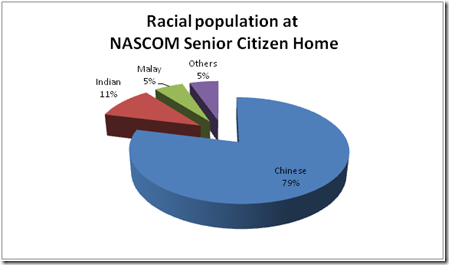

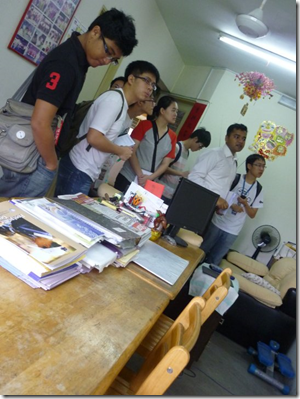
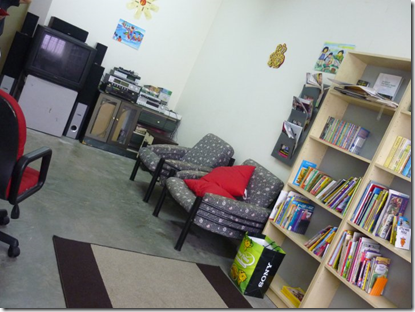
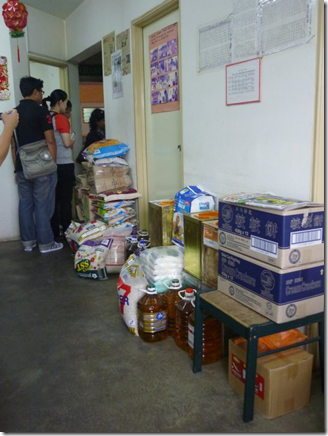
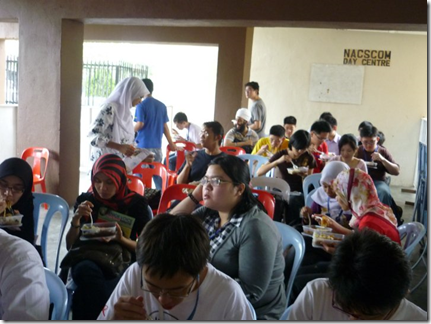
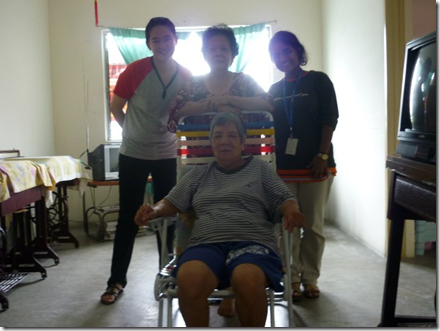

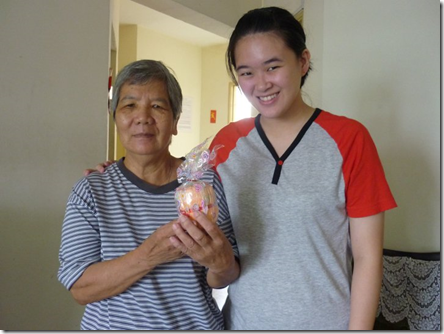
If you dont mind, where do you host your web site? I am searching for a good host and your webpage seams to be fast and up most the time
WordPress 🙂